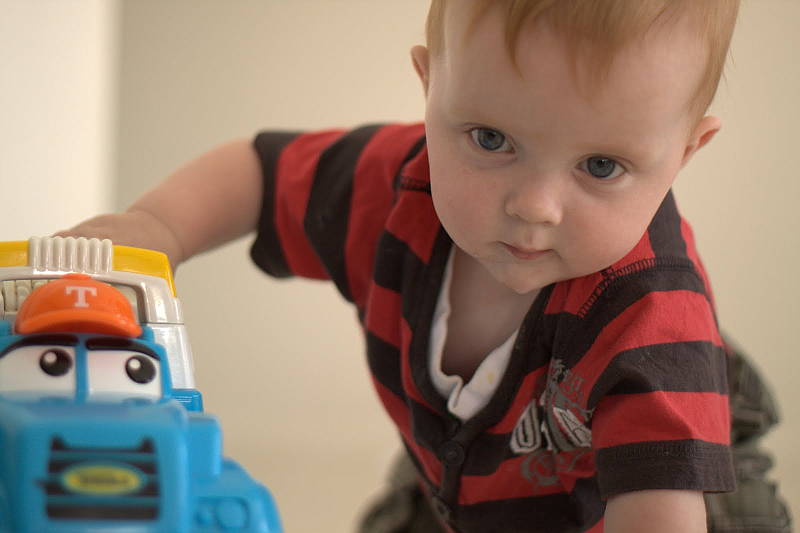Ear infection in children
Children get ear infections more frequently than adults do. Popular belief is that this is because children are more exposed to germs and bacteria, or because their immune systems have not built up the same tolerances that adults have. In fact, for the most part, both these beliefs are incorrect.
Children are more prone to ear infections because their Eustachian tubes are much smaller and almost completely horizontal. As we grow and develop, the Eustachian tubes elongate and become more angled allowing fluid to drain from the ear more easily. Due to this, fluid can be trapped in the middle ear more easily, allowing bacteria to breed and grow.
If your child experiences ear infections, ear grommets can be the most reliable treatment to help prevent future ear infections and other pediatric ear conditions. However, it can be difficult to discern when the right time is to schedule your child to have ear grommets inserted in their ears.
Ear Grommets
Ear grommets are tiny tubes that allow fluid to drain from the middle ear. During this very minor, minimally invasive surgery, the doctor will insert the grommets (or tubes) into tiny incisions in the eardrums. There is no need to have them removed, as they will slowly work themselves out and fall out of the ears when the eardrums heal. By this time, the Eustachian tubes have developed, and fluid can drain on their own.
Chronic Ear Infections
If your child only gets ear infections every now and then, and they do not last for very long, grommet surgery may not be required. Unfortunately, many children will suffer from multiple, seemingly chronic ear infections. While they will eventually grow out of this phase, it can be difficult for parents to watch their child in so much pain, repeatedly.
If your child is getting ear infections frequently, talk to your pediatrician about ear grommets. The surgery takes so little recovery time that children are often back in school or daycare the next day after the procedure, and they often feel much better without ear infections to deal with.
Glue Ear
If your child’s middle ear is filling up with a thick, glue-like substance instead of fluid, this is called glue ear. In addition to excess waxy buildup, you will notice that your child has trouble hearing normal conversational tones and sounds that you would otherwise expect them to easily notice.
Glue ear is not painful, but, as we said above, it does affect your child’s hearing, and it can affect their sense of equilibrium, as well. If you notice that your child is having balance problems, in addition to difficulty hearing, it is probably time for a trip to the pediatrician.
Your doctor may recommend a period of watchful waiting before doing anything else. Glue ear sometimes goes away on its own if you do not want to perform any unnecessary medical procedures on your child. If it does not go away though, it is probably time for ear grommets.
What to Expect After the Procedure
If you decide that it is time to get ear grommets inserted in your child’s ears, you should know what to expect. As we said, the procedure has very little recovery time. However, your child may perceive that sounds are louder than they were before for a few days after. This is just an adjustment period and is nothing to worry about. Ask your doctor if you have any other concerns before or after the procedure.
Children’s ear infection and the role for ear grommet placement
Acute otitis media or middle ear infection is the most common childhood bacterial infection and may affect up to 75% of children by the age of 5 years. Otitis media with effusion, also know as glue ear, is the collection of fluid in the middle ear space. This occurs due to the negative pressure produced by dysfunction of the Eustachian tube – the passage between the back of the nose, called the nasopharynx and middle ear.
The consequences of childhood middle ear infection may include hearing loss, perforation of the tympanic membrane, delay in speech and language development, balance problems and poor school performance. Whilst chronic ear disease may affect all children, Aboriginal and Torres Strait Islander children are at particular risk. In Australia, insertion of ear tubes, also called ear grommets will usually be recommended when a child has repeated middle ear infections, or has hearing loss caused by glue ear.
Ear grommet placement is most commonly needed from the age of one to three years.
The benefits of ear grommet placement may include
- Reduced risk of future ear infections.
- Restored hearing loss caused by middle ear fluid.
- Improvement in speech and language development.
- Improvement in balance, behaviour and school performance.
- Management of the complications of middle ear infection.
If you have concerns about your child’s hearing or problems with ear infection, contact your local doctor, who will arrange for you to see an Ear, Nose and Throat Surgeon.
For more information about ear grommet placement in children click here.
References
- Glue ear grommets and other operations
- Glue ear treatment
- Does our daughter need grommets
- Understanding otitis media basics
The post When a child needs ear grommets appeared first on ENT Clinic Sydney.
